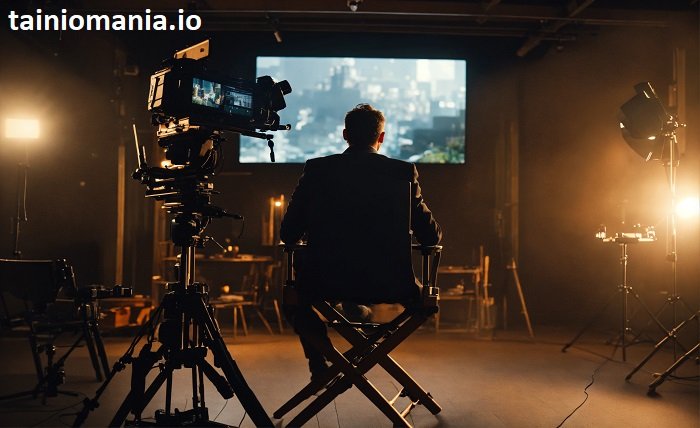In the realm of cinema, film vision stands as the cornerstone of storytelling, shaping how narratives are conveyed and experienced by audiences. Film vision encompasses the director’s creative perspective, the cinematographer’s artistry, and the collaborative efforts of the entire production team to create a cohesive and immersive visual narrative. This comprehensive guide delves into the essence of film vision, exploring its components, significance, and impact on the art of filmmaking. Whether you’re an aspiring filmmaker, a cinephile, or someone curious about the magic behind the screen, understanding film vision is essential to appreciating the intricacies of film as a visual medium.
The Essence of Film Vision
At its core, film vision is the unique perspective that a director brings to a film, guiding every visual and narrative decision. Film vision shapes the tone, style, and emotional resonance of a movie, distinguishing it from others in the vast landscape of cinema. It involves a blend of artistic intuition and technical prowess, where film vision manifests through choices in lighting, color palettes, camera angles, and shot compositions. A strong film vision ensures that every element of the film works harmoniously to tell a compelling story, creating a memorable and impactful viewing experience.
Components of Film Vision
Film vision is a multifaceted concept that integrates various elements to create a unified aesthetic and narrative. Key components of film vision include:
- Storytelling Style: How the story is told, whether through linear narratives, non-linear structures, or experimental formats.
- Visual Aesthetics: The use of color, lighting, and composition to create a specific look and feel.
- Cinematography: Camera techniques and movements that enhance the storytelling.
- Sound Design: The auditory elements that complement the visual aspects of film vision.
- Editing: The pacing and flow that maintain the rhythm of the narrative.
Each of these components plays a crucial role in shaping the overall film vision, ensuring that the final product is a cohesive and engaging piece of art.
The Role of the Director in Film Vision
The director is the primary architect of a film’s film vision, orchestrating all aspects of production to realize their creative intent. Through film vision, the director communicates their interpretation of the script, guiding actors’ performances, and collaborating with the cinematographer and production designer to achieve the desired aesthetic. A director’s film vision is often influenced by their personal experiences, artistic influences, and the thematic elements they wish to explore. By maintaining a clear and consistent film vision, directors can create films that resonate deeply with audiences and leave a lasting impression.
Cinematography and Film Vision
Cinematography is a critical component of film vision, as it translates the director’s vision into visual imagery. The cinematographer, or director of photography, works closely with the director to determine the best camera angles, movements, and lighting techniques to convey the intended mood and tone. Through film vision, cinematographers use tools like lenses, filters, and lighting setups to create specific visual styles, whether it’s the gritty realism of a noir film or the vibrant colors of a fantasy epic. Effective cinematography enhances film vision, making the story more immersive and visually compelling.
The Impact of Lighting on Film Vision
Lighting is a fundamental element that significantly influences film vision, shaping the atmosphere and emotional tone of a scene. Different lighting techniques can evoke various moods, from the stark contrasts of high-key lighting in comedies to the shadowy depths of low-key lighting in thrillers. Film vision utilizes lighting to highlight characters, create depth, and direct the audience’s attention to specific elements within the frame. By manipulating light and shadow, filmmakers can enhance the storytelling, adding layers of meaning and visual interest to their work.
Color Theory in Film Vision
Color theory plays a pivotal role in film vision, as it affects the audience’s perception and emotional response. The strategic use of color palettes can reinforce themes, symbolize character traits, and set the overall tone of the film. For instance, warm colors like red and orange can convey passion and intensity, while cool colors like blue and green can evoke calmness or melancholy. Film vision leverages color to create visual harmony or contrast, guiding the viewer’s emotional journey and enhancing the narrative’s impact. Mastery of color theory allows filmmakers to use film vision to its fullest potential, crafting visually stunning and emotionally resonant films.
Editing and Film Vision
Editing is another crucial aspect that shapes film vision, determining the pace and rhythm of the narrative. Through film vision, editors decide how scenes transition, the timing of cuts, and the overall flow of the story. Effective editing ensures that the visual storytelling remains coherent and engaging, maintaining the audience’s interest from start to finish. Whether employing rapid cuts to build tension or long takes to develop character depth, editing techniques are integral to realizing the director’s film vision. The seamless integration of editing and film vision creates a polished and compelling final product.
Sound Design and Film Vision
Sound design enhances film vision by adding an auditory layer to the visual narrative. This includes dialogue, sound effects, ambient noises, and music, all of which contribute to the film’s atmosphere and emotional depth. Through film vision, sound designers create a cohesive soundscape that complements the visual elements, heightening the audience’s immersion and emotional engagement. Whether it’s the subtle rustling of leaves in a dramatic moment or the booming score of an action sequence, sound design is essential in bringing film vision to life, making the cinematic experience richer and impactful.
The Influence of Production Design on Film Vision
Production design encompasses the creation of the film’s physical environment, including sets, props, and costumes, all of which are vital to film the vision. A well-crafted production design ensures that every visual element aligns with the director’s vision, enhancing the authenticity and believability of the story. Whether depicting a futuristic cityscape or a historical setting, production design shapes the world in which the characters live, supporting film vision by providing a visually coherent and immersive backdrop. The meticulous attention to detail in production design contributes significantly to the overall effectiveness of film vision.
Achieving Cohesion in Film Vision
Achieving cohesion in film vision requires seamless collaboration among all members of the filmmaking team. From pre-production planning to post-production editing, every stage of the process must align with the overarching film vision. Effective communication and a shared understanding of the director’s vision ensure that each element, whether visual, auditory, or narrative, contributes to the final product’s unity. By maintaining a consistent film vision throughout the production, filmmakers can create a harmonious and impactful film that resonates with audiences on multiple levels.
Conclusion
Film vision is the driving force behind compelling and memorable cinema, shaping how stories are told and experienced. By integrating elements such as cinematography, lighting, color theory, editing, sound design, and production design, film vision creates a cohesive and immersive narrative that captivates audiences. A strong film vision not only enhances the aesthetic appeal of a film but also deepens its emotional and thematic resonance. As technology and artistic techniques continue to evolve, the power of film vision remains central to the art of filmmaking, ensuring that cinema remains a profound and influential medium for storytelling.
FAQ
1. What is film vision in filmmaking?
Film vision refers to the unique perspective and creative approach that a director and their team bring to a film, shaping its visual and narrative elements to create a cohesive and engaging story.
2. How does film vision influence a movie’s aesthetic?
Film vision influences a movie’s aesthetic by guiding decisions related to cinematography, lighting, color palettes, production design, and overall visual style, ensuring that all elements align to support the story.
3. Who is responsible for developing the film vision of a movie?
The director is primarily responsible for developing the film vision of a movie, collaborating with the cinematographer, production designer, and other key crew members to realize their creative intent.
4. Can film vision change during the production process?
Yes, film vision can evolve during production as the director and team encounter new ideas, challenges, or inspirations. Flexibility and adaptability are essential to maintaining a strong film vision.
5. Why is film vision important in filmmaking?
Film vision is important because it ensures that all aspects of the film work together harmoniously, creating a unified and immersive experience for the audience that effectively conveys the intended story and emotions.













